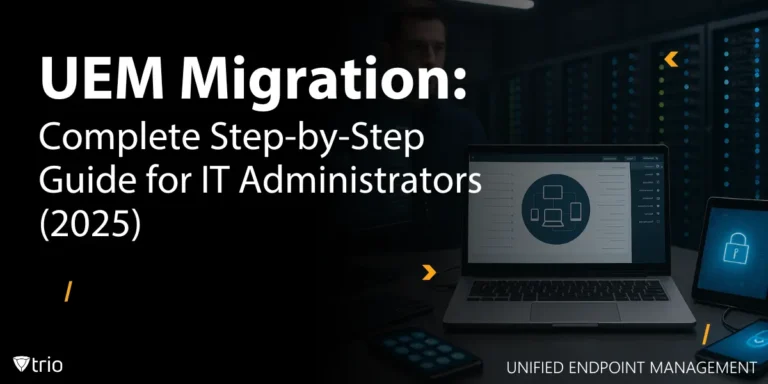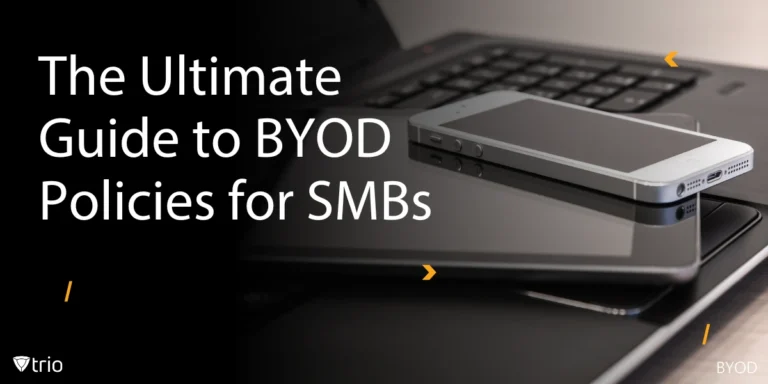As organizations increasingly rely on digital resources and data, ensuring robust security measures becomes imperative. In this context, understanding and implementing effective conditional access policies stand as pivotal strategies for safeguarding sensitive information. Conditional access, within the realm of IT, offers a sophisticated approach to controlling resource access based on various factors, ranging from user identity to device compliance and location. Additionally, effective software management plays a crucial role in maintaining a secure environment by ensuring that all software applications and systems are up-to-date with the latest security patches and updates. This blog post provides a comprehensive guide to conditional access policies and software management, exploring their significance, implementation, and best practices for enhancing organizational cybersecurity defenses.
What Is the Conditional Access Policy?
Conditional access, in the realm of information technology (IT), refers to a security approach that enables organizations to control access to resources based on specific conditions or criteria. These conditions could include factors such as user identity, device type, location, time of access, and the sensitivity of the resource being accessed. Conditional access is part of a larger policy called zero-trust security in which all users have to be verified and no user or device is trusted by default.
The purpose of implementing conditional access is to enhance security by ensuring that only authorized users, using approved devices and under appropriate circumstances, are granted access to sensitive data, applications, or services. A failure in conditional access policies can endanger a company significantly. By enforcing access controls based on predetermined conditions, organizations can mitigate the risk of unauthorized access, data breaches, and other security threats.

10 Conditional Access Policy Best Practices
Implementing effective conditional access policies is crucial for maintaining robust security in organizations. Here are some best practices to keep in mind when creating conditional access policies:
- Multi-Factor Authentication (MFA): An often-cited conditional access policy example is multi-factor authentication. Require users to authenticate using multiple factors such as passwords, biometrics, smart cards, or tokens. MFA adds an extra layer of security beyond just passwords, making it harder for unauthorized users to gain access.
- Device Health Checks: Implement policies that check the health status of devices before granting access. Ensure that devices meet security standards, such as having up-to-date operating systems, antivirus software, and encryption enabled. Device-based conditional access policy can also help as one can use the capabilities of each device to upgrade the organization’s security posture.
- Location-Based Access Controls: Restrict access to sensitive resources based on the geographic location of users or devices. This helps prevent unauthorized access from unfamiliar or potentially risky locations.
- Time-Based Access Controls: Define access policies that restrict access to certain resources during specific times of the day or week. For example, limit access to critical systems outside of regular business hours to reduce the risk of unauthorized activity.
- Role-Based Access Controls (RBAC): Implement RBAC to assign permissions to users based on their roles and responsibilities within the organization. This ensures that users only have access to the resources necessary for their job functions, reducing the risk of privilege escalation and unauthorized access.
- Conditional Access based on Network Security: Enforce access policies based on the security posture of the network from which the user is accessing resources. Allow access from trusted networks while requiring additional authentication or blocking access from untrusted or compromised networks.
- Granular Access Policies: Define granular access policies tailored to different user groups, applications, or data types. This allows organizations to apply appropriate levels of access controls based on the sensitivity of the resource being accessed. A great example is implementing privileged access management best practices.
- Real-Time Monitoring and Adaptive Policies: Implement policies that dynamically adjust access controls based on real-time risk assessments. Continuously monitor user behavior, device health, and other contextual factors to adapt access policies accordingly and respond to emerging security threats.
- Compliance Enforcement: Ensure that access policies align with regulatory requirements and industry standards relevant to the organization's operations. Enforce compliance by implementing access controls that prevent unauthorized access to sensitive data and maintain audit trails for accountability.
- Regular Review and Updates: Periodically review and update access policies to adapt to evolving security threats, changes in organizational requirements, and advancements in technology. Regularly assess the effectiveness of existing policies and adjust them as needed to maintain an optimal balance between security and usability as part of your server management and device management strategies.
How Trio Can Facilitate Conditional Access Policies
Mobile Device Management (MDM) solutions facilitate conditional access by providing centralized control over mobile devices accessing corporate resources. Through MDM solutions such as Trio, administrators can enforce policies that ensure devices meet security standards, such as encryption and passcode complexity.
Trio integrates with identity providers to enable multi-factor authentication (MFA) and role-based access controls (RBAC), enhancing security by verifying user identities before granting access to sensitive data or applications. Trio also supports the implementation of conditional access policies based on factors like device compliance, user authentication, and network security. Administrators can define rules to restrict access to corporate resources based on predefined conditions.
Additionally, Trio offers app management capabilities to control which applications are installed and used on managed devices. Administrators can enforce policies to allow or block access to corporate resources based on the presence of specific applications or app versions. In the event of a security incident, Trio enables administrators to remotely wipe or lock devices to prevent unauthorized access to corporate data. Compliance reporting and auditing features allow organizations to monitor device compliance with security policies and regulatory requirements, ensuring a secure mobile environment and mitigating the risk of company data breaches.
Conclusion
In conclusion, mastering the art of conditional access policies empowers organizations to fortify their cybersecurity posture, ensuring that only authorized users with compliant devices gain access to sensitive data and applications. By embracing best practices such as multi-factor authentication, device health checks, and granular access policies, organizations can navigate the complex realm of cybersecurity with confidence, staying resilient against evolving threats while maintaining compliance with regulatory standards. Additionally, setting up a Virtual Private Network (VPN) for small businesses can further enhance security by encrypting internet connections and providing secure remote access to corporate networks and resources.
As you delve into the realm of conditional access policies, consider leveraging the power of Trio. With Trio, you can streamline device management, enforce robust security policies, and maintain compliance effortlessly. Take the next step towards fortifying your cybersecurity defenses – try Trio’s free demo today and experience peace of mind knowing your data is protected.
Get Ahead of the Curve
Every organization today needs a solution to automate time-consuming tasks and strengthen security.
Without the right tools, manual processes drain resources and leave gaps in protection. Trio MDM is designed to solve this problem, automating key tasks, boosting security, and ensuring compliance with ease.
Don't let inefficiencies hold you back. Learn how Trio MDM can revolutionize your IT operations or request a free trial today!





